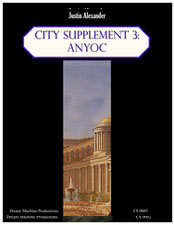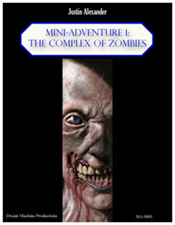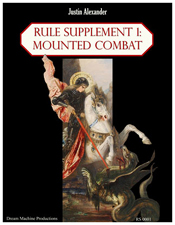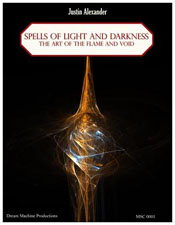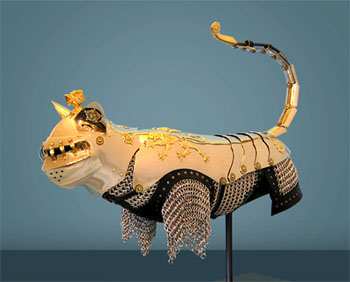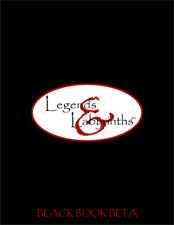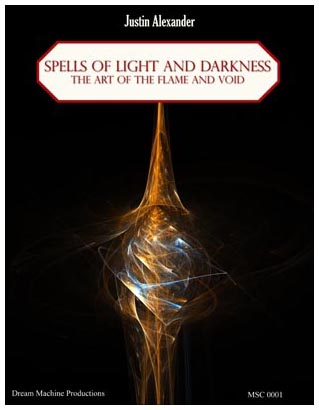I spent this past week working on Rule Supplement 2: Flight. When I was first looking through this material, I thought that this was going to be a relatively short supplement. Rule Supplement 1: Mounted Combat had clocked in at 90 pages, but it looked like Flight was going to be a comparatively thin 20-30 pages of material.
But as I began collating and collecting the material I realized that, like Mini-Adventure 2: The Black Mist, this project was going to be more complex than I had anticipated. Material that works just fine as bullet-pointed lists in a playtest document don’t work that well once they’ve been divorced from the playtest environment.
One of the most important things I look at in the development of RPG material is the utility of that material. “Utility”, in this case, has two meanings:
First, is the material useful?
Second, is the material easy to use?
USEFUL
A rule can be meticulously researched, mathematically perfected, and seamlessly integrated with the the rest of the game system and still be completely useless.
For example, FATAL (a fantasy roleplaying game) has a disturbingly over-detailed system for determining the size of your character’s nipples. This system could be the most incredibly accurate method for randomly determining the size of a character’s nipples and it would still be utterly useless.
As a more marginal example, Rule Supplement 1: Mounted Combat included a system for handling contest jousting. This system is necessary and useful if you want to include a jousting tournament in your campaign because the default D20 combat system was designed for lethal combat, not contests of arms. As I described in the supplement:
The standard combat system is not designed to handle contest jousting: The scoring system for jousting depends on a variety of conditions (such as staying on your horse) which the system doesn’t cover at all. Therefore, the rules found here use the basic attack roll mechanic as a basis for a system which will allow you to incorporate the thrills of a jousting tournament into your game.
These rules are not designed to handle typical combat jousting — that’s still done best using the normal combat system. These rules are designed to handle a structured jousting duel.
For similar reasons, the default D20 combat system is not well-designed for boxing matches or football games. (It doesn’t do a half-bad job at wrestling, although if you were going to do some sort of wrestling-focused campaign you’d probably want more detail.)
But there came a point in designing the contest jousting rules where I faced a choice: I could add significant complexity to the rule in order to handle situations like the breaking of a lance or hitting the tilt (which are essential elements of historical scoring in jousting tournaments), or I could keep the system for simple.
In the end I included those additional details as optional rules: Useful if you’re going to have a tournament as the center-piece of a particular adventure, but not particularly useful if the contest jousting has a less important or enduring role in your game.
EASY TO USE
In some ways, this is just a specific type of usefulness: The easier a rule is to use, the more likely it is that you’ll actually use the rule, and the more useful those rules become.
A good counter-example are the 3rd Edition rules for grappling: These rules are difficult to use and, as a result, many gaming groups simply don’t use them. There’s a mutual and unspoken agreement in these groups that no one will ever try to grapple anybody else because nobody wants to deal with the consequences.
The ability to easily use a rule, of course, has something to do with how that rule has been designed. But, in my experience, the ease or difficulty of using a rule often has as much to do with how the rule is presented as it does with the actual rule itself.
If you’re looking for a good example of how presentation can make a rule more difficult to use than it actually is, you don’t have to look any farther than the entire combat chapter in the PHB: Whether you’re looking at the order in which the various rules are presented; the way each rule is described; or the layout of the page… pretty much everything about that chapter makes the rules harder to use. (The 3.5 PHB was a slight improvement over the 3.0 PHB, but only slight. It’s still pretty dire.)
Here’s an example from my work on Rule Supplement 2: Flight. This is the Flight Maneuverability table as it appears in the DMG:
| Perfect | Good | Average | Poor | Clumsy |
| Minimum forward speed | None | None | Half | Half | Half |
| Hover | Yes | Yes | No | No | No |
| Move backward | Yes | Yes | No | NO | NO |
| Reverse | Free | -5 ft. | No | No | No |
| Turn | Any | 90°/5 ft. | 45°/5 ft. | 45°/5 ft. | 45°/10 ft. |
| Turn in place | Any | +90°/5 ft. | +45°/-5 ft. | No | NoAny |
| Maximum turn | Any | Any | 90° | 45° | 45° |
| Up angle | Any | Any | 60° | 45° | 45° |
| Up speed | Full | Half | Half | Half | Half |
| Down angle | Any | Any | Any | 45° | 45° |
| Down speed | Double | Double | Double | Double | Doubles |
| Between down and up | 0 | 0 | 5 ft. | 10 ft. | 20 ft. |
And here’s the Flight Maneuverability table as it will appear in Rule Supplement 2: Flight:
| Perfect | Good | Average | Poor | Clumsy |
| Minimum Forward Speed | None | None | Half | Half | Half |
| Fly Backward | Yes | -5 ft. | No | No | No |
| Turn | Any | 90°/5 ft. | 45°/5 ft. | 45°/5 ft. | 45°/10 ft. |
| Turn in Place | Any | +90°/5 ft. | +45°/-5 ft. | No | No |
| Up Angle | Any* | Any | 60° | 45° | 45° |
| Down Angle | Any | Any | Any | 45° | 45° |
| Between Down and Up | 0 | 0 | 5 ft. | 10 ft. | 20 ft. |
The second table has the exact same information as the first table. (With one exception: The fact that only flying characters with perfect maneuverability can gain altitude at full speed is handled by a footnote.) Despite this, we’ve gone from 12 rows of information to only 7 rows of information by removing two areas of inefficiency:
First, we’ve focused the table so that it describes only the differences between the classes of maneuverability. For example, look at the entry for “Down speed” on the original table. It’s not summarizing a difference between flying characters with different maneuverabilities. It’s describing one of the general rules for flying: When you fly down, you move at twice your normal flying speed.
Second, we’ve removed redundant information. Look at the entries for “Minimum forward speed” and “Hover” on the original table. They’re the exact same information. The first line says, “If you don’t have a minimum forward speed, you don’t have to move every round while flying.” The second line says, “If you can hover, you don’t have to move every round while flying.”
These types of inefficiencies not only make the flying rules look more difficult than they really are (by cluttering the table), they actually make them more difficult to use.
DESIGNING EASY TO USE RULES
There are several ways you can make a rule easy to use:
1. DESIGN THE RULE SO THAT IT’S EASY TO REMEMBER.
The minute you have to reach for a rulebook and start flipping through it to figure out what you need to do, you’re burning time that you could be using to actually play the game. If you don’t have to look the rule up, then its much easier to use and much more likely to actually get used.
Making a rule easy to remember means making it simple and straightforward. Properly designing and developing a rule is a constant battle between necessary detail (which adds complexity) and the desire to make the rule easy to memorize (which requires simplicity).
It should also be noted that there are two types of rules: There are rules that you commonly use at the tabletop (like an attack roll) and rules which you commonly only have to worry about during prep (like calculating the effects of encumbrance). Its less important for the latter type of rules to be easily memorized because it’s not a big deal to be flipping through the rulebooks during prep (in fact, it’s almost impossible to avoid). It’s only during the time-crunch of actually playing the game that you want to avoid page-flipping and rule-reading.
(Of course, that being said, you have to be careful. Some of the most painful bogs of complexity in D20 are the result of effects which suddenly force you to make prep-time calculations in the middle of play. Spells like polymorph and enlarge person are obvious problem areas. But take a look at the seemingly innocuous ray of enfeeblement: How many groups, rather than flipping through the PHB looking for the encumbrance tables, simply ignore the fact that the fighter who has been knocked down to a Strength of 2 is probably no longer capable of lifting the full plate he’s wearing?)
2. DESIGN THE RULE SO THAT IT’S EASY TO REFERENCE.
Sometimes you simply can’t design a rule so that it can be easily memorized. Maneuverability for flying characters is like that: You can certainly design flying rules which don’t take those differences into account, but then you end up with dragons flying like hummingbirds. And, for a lot of people, that causes suspension of disbelief problems.
(On the other hand, keep an eye out for the “Quick and Dirty Flying Rules” that will be part of Rule Supplement 2: Flight. These easy-to-remember rules for flight give you some distinction between a dragon and a hummingbird, while still remaining simple enough that you can quickly memorize them and avoid the page-flipping.)
And, actually, no matter how simple you make a rule it will need to be looked up and read at least once while people are learning the rules.
Making a rule easy to reference means a lot of things: It means a comprehensive index and/or detailed table of contents. It means the type of robust cross-referencing sidebars that we pioneered in Rule Supplement 1: Mounted Combat to make sure that the rules you need are always right at your fingertips. It means making sure that, whenever possible, the description of a rule or monster or spell is not split up across two different pages.
One of the things it means for Rule Supplement 2: Flight is that we include a cheat sheet so that you don’t have to go flipping through the book trying to find the particular chart or diagram that you need.
One of the most important — and most overlooked — elements of making rules easy to reference is how your organize the sequencing of material in your rulebooks. For example, here’s an outline of the first three pages of the chapter on combat in the PHB:
Chapter 8: Combat
The Battle Grid
How Combat Works
Combat Statistics
Attack Roll
Attack Bonus
Strength Modifier
Dexterity Modifier
Size Modifier
Range Penalty
Damage
Minimum Damage
Strength Bonus
Multiplying Damage
Ability Damage
Armor Class
Armor and Shield Bonuses
Dexterity Modifier
Size Modifier
Other Modifiers
Touch Attacks
Hit Points
Speed
Saving Throws
Saving Throw Types
Saving Throw Difficulty Class
The thing that immediately strikes me is that this outline claims that the game mechanics for attack rolls and saving throws are not, in fact, mechanics… they’re statistics.
The other thing that strikes me is that the order in which the various “statistics” is presented is essentially random: It’s not alphabetical for easy reference. But it can’t have been organized for easy comprehension by the first-time reader, either, because the first thing on the list is the attack roll… which is defined before any of its constituent components (like the attack bonus and the opponent’s AC) are discussed.
OK, maybe the idea was that you’d discuss the attack roll first so that its components would have a context. But this idea is almost immediately shot down. Yes, they go from the attack roll to the attack bonus (one of the things that make up the attack roll). But then they segue off to damage (which is the consequence of the attack roll), before going back to Armor Class (the other component of the attack roll). And then it’s like they remember that they weren’t done talking about damage, because now they talk about hit points. (Notice that ability damage was discussed in a sub-heading of the “Damage” section, but hit points — the primary form of damage — is split off into its own, completely disconnected section.) Then they toss in speed and round the whole thing off by talking about another mechanic (instead of a statistic) that is only tangentially related to combat.
One could go on: They’ve got the discussion of the “Battle Grid” on one page and the diagram that accompanies it on the opposite side of the same sheet (so that you’ve got to turn the page to follow along). (And why isn’t the discussion of the battle grid in the “Movement and Positioning” section of the chapter? Although, even if you moved the discussion of the battle grid there, that section still wouldn’t contain all the rules for movement and positioning.)
And this is just three pages we’re talking about here. The entire chapter is a disaster area.
3. DESIGN THE RULES SO THAT THEY’RE EASY TO LEARN.
The quickest way to make sure that nobody uses a rule is to make it so that nobody understands the rule.
Now, in some cases, there can be a trade-off between designing a rulebook so that it both (a) teaches the new player how to play the game and (b) is easy for the veteran player to quickly reference. For example, as we’ve already discussed, organizing sub-sections in alphabetical order can make it easy to find the sub-section you want quickly. On the other hand, this can lead to new players reading about a rule before they understand the full context for that rule.
My personal belief is that this trade-off is rarely as severe or as frequent as some game designers apparently believe it to be. Sometimes its a matter of rethinking how you’re discussing the rules. Sometimes its a matter of re-labeling a particular sub-section.
But when the trade-off does need to happen, I personally believe you’re better off leaning in the direction of the veteran player’s desire for quick and efficient reference. Why? Because a player will only use a rulebook to learn the game once. They’ll need to reference it dozens or hundreds of times.
If you’re concerned that a particular decision made for easy reference will lead the new player to be left completely adrift, I believe the solution is to write a short introduction giving a complete overview of the rules you’re about to detail. In the PHB, for example, a complete overview of character creation is given on page 6. (They try to do the same thing for combat, too. They just do it very poorly.) This introductory or quick start section will be completely ignored by the veteran, but it effectively teaches the new player the game. (Or, at the very least, gives them a context in which to place the rules they’re about to read.)
4. DESIGN THE RULE SO THAT IT’S QUICK TO USE.
I talked about this a little bit in my essay on tumbling: “Whenever you add a die roll to the game you’re slowing it down. Slow it down enough and it’s no longer fun to play.”
On the flip side, it’s important to remember that rules are also responsible for making the game fun to play. Rules are responsible for creating and/or modeling the tactical and strategic situations which make for interesting gameplay.
BETTER RULES NOT FEWER RULES
A common misconception is that “more rules” is synonymous with “more complexity” or “greater difficulty”. While this certainly can be true, it doesn’t need to be true.
For example, one of the major insights I had while working on Rule Supplement 2: Flight is that aerial combat is rarely as fun as it should be. And the primary reason for that is that aerial maneuvering is more difficult than it needs to be. As I write in the book itself:
Handling minimum forward speeds, maximum turn in place angles, and the other details of three-dimensional, aerial movement can be a tedious affair. It can discourage you from using the rules to model complex aerial maneuvers. Instead of twisting and whirling through the air in battles of tooth and fang, your dragons may content themselves with sedately cruising in straight lines simply in the name of “keeping things simple”.
Perhaps the most obvious way you could try to fix this problem would be to remove rules from the game: Make the rules easier to use by removing some of the rules.
But there were a couple of reasons that I didn’t want to do this:
First, one of the core design methodologies for the Rule Supplements is that they should be 100% compatible with the core rulebooks. The Rule Supplements should expand the game but not alter the game. While I do many things in Rule Supplement 2: Flight to make the existing rules easier to use (redesigning the Flight Maneuverability table is one example of that), I didn’t want to fundamentally alter the way that flying works in D20.
Second, I’m not convinced that removing mechanics will actually increase the overall utility of the flying rules. We talked about this a little bit before: Removing some of the detail from the rules might make them easier to use, but it will also remove the useful distinction between a dragon and a hummingbird.
This is where it becomes important to have better rules instead of fewer rules. Rule Supplement 2: Flight will include a set of rules I refer to as “Aerial Aerobatics”.
In many ways, you can actually say that aerial aerobatics aren’t “new rules”: They don’t actually add detail or distinction to the system. Instead, they act as shortcuts that make the existing rules of aerial combat easier to use.
For example, if Lenora — a fighter under the effects of a fly spell — is being chased by a Huge dragon she might want to loop around and get behind the dragon. Since she has good maneuverability and the dragon is 30 feet behind her, you could look at the Flight Maneuverabiltiy table and calculate, step-by-step, that she needs to move at least 55 feet to end up behind the dragon: She can turn 90-degrees after traveling 5 feet. If she’s descending she travels at twice her speed. So she flies forward 5 feet, executes a 90-degree turn, and then flies down 5 feet at twice her speed. She then executes another 90-degree turn, flies backward 40 feet — 30 feet to reach the dragon and another 20 feet to clear the dragon. She then executes another 90-degree turn and flies up 5 feet at half her speed, then executes another 90-degree turn, and ends up 5 feet behind the dragon flying in the same direction she started out.
Or Lenora’s player could simply look at the loop aerobatic maneuver and get the answer immediately: A character with good maneuverability requires 15 feet of movement to perform a loop. Add the distances Lenora travels backwards (40 feet) to get a total movement of 55 feet (of which 50 feet counts towards her minimum forward speed for the round).
A loop is a simple example of what the aerobatic system can do, but the result is clear: The aerobatic rules makes these types of complex aerial maneuvers easier to use. As a result, players at the table are more likely to use complex aerial maneuvers. And, as a result, aerial combat will become more dynamic, exciting, and complex… yet, at the same time, not become more complex or time-consuming to actually play.
CONCLUDING THOUGHTS
Even in an era of graphically-rich books with high production values in the roleplaying industry, I think that the majority of rulebooks and supplements remain fairly sloppy when it comes to organizing material at both the both macro and micro level. (By which I mean (a) the overall sequencing and cross-referencing of material and (b) how information is actually presented on the page.) There are also plenty of rules which are just plain sloppy in how they’ve been written.
I think I was lucky, as a freelancer, to have some of my earliest experience working for Dream Pod 9: They strongly emphasized writing material to the page. They didn’t like to split the information within any given section across multiple pages, believing — quite correctly — that it’s easier to reference and use a rule or a bit of setting information if you don’t have to flip between multiple pages while doing so. This forced me, as a writer, to focus on how I was organizing and sequencing the material I was working on.
Currently I continue to take a lot of inspiration from those high quality Dream Pod 9 supplements. I also look at how high quality textbooks are laid out. And whenever I see an innovative practice in a roleplaying manual, I make a point of adding it to my repertoire and keeping it there.
And I always — always! — think about how the product will actually be used at the gaming table.



